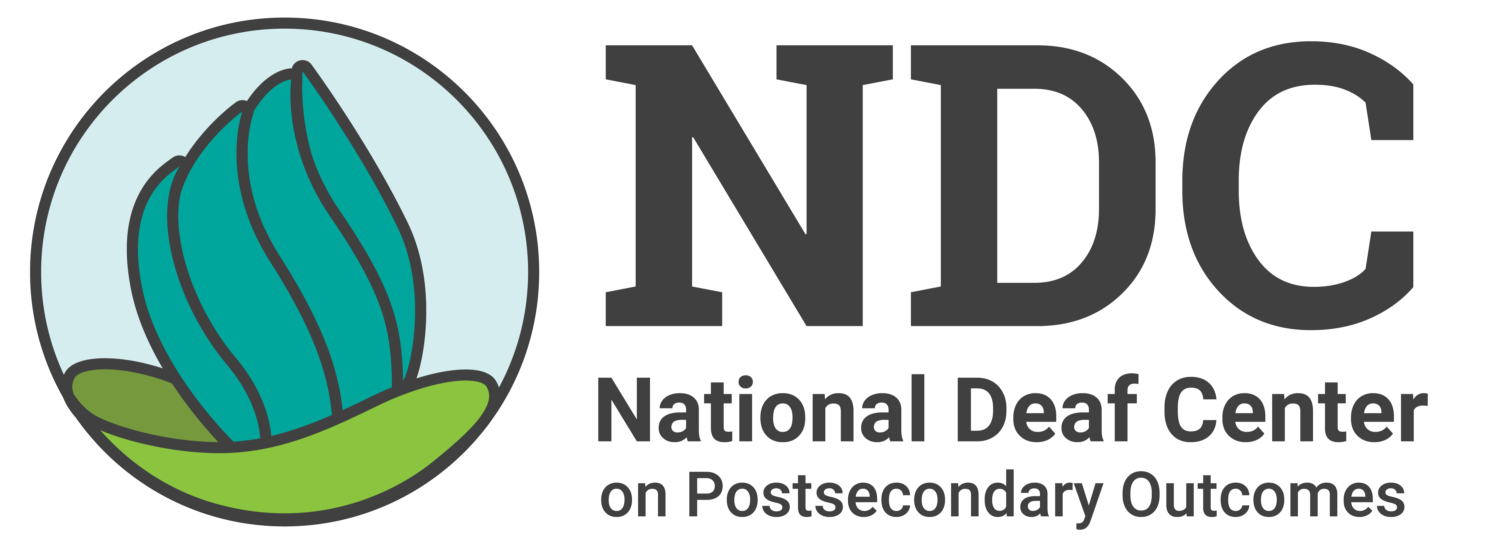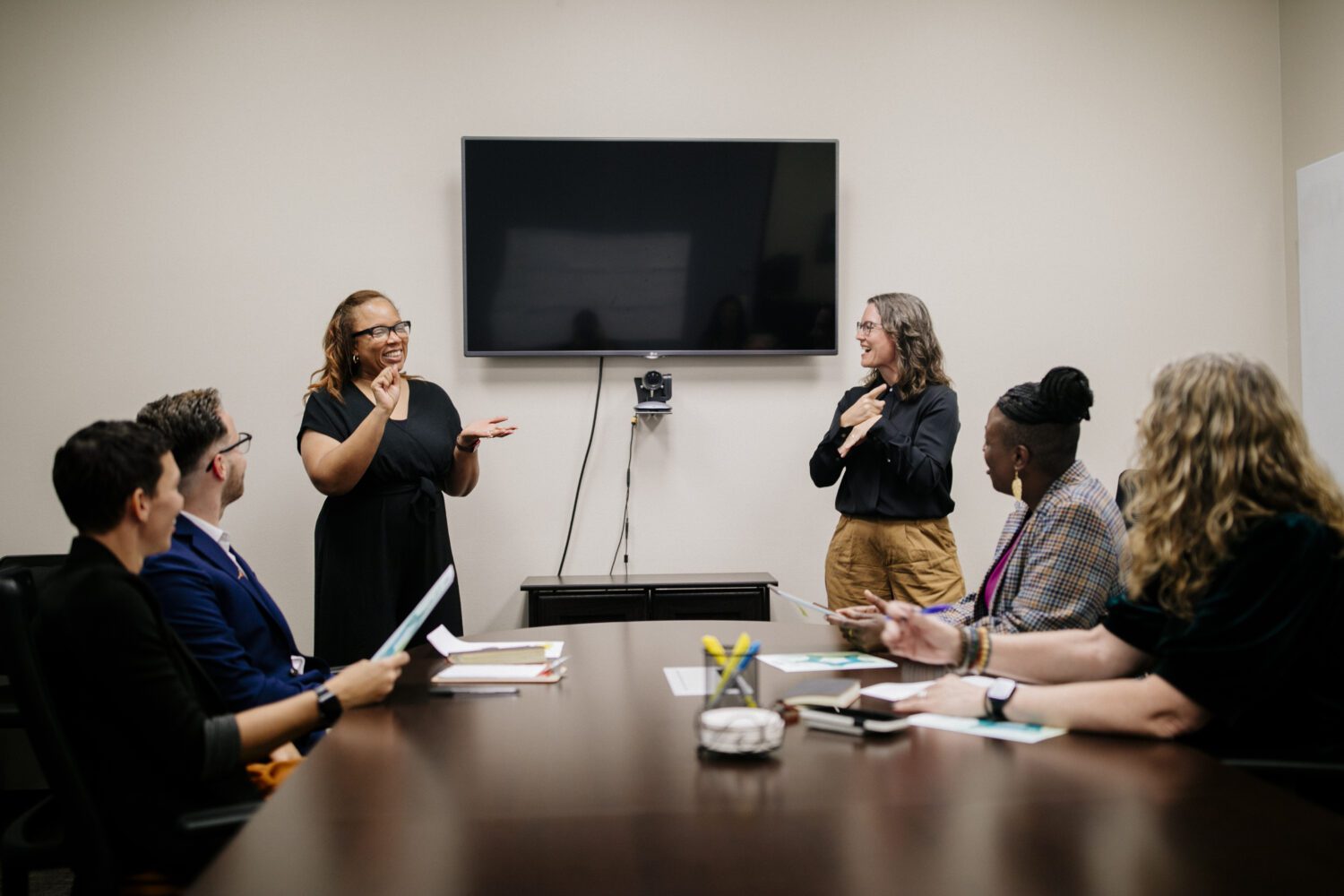When we think about predictors of postsecondary enrollment and #DeafSuccess, we often look at grades or academic skills. While these are important factors, the National Deaf Center on Postsecondary Outcomes (NDC) has found that “high expectations for success” are one of five key impact areas for postsecondary attainment.
In short, our expectations matter. Having high expectations means believing in a student’s ability to succeed and not believing their opportunities are limited due to being deaf. These expectations do not develop in a vacuum; teachers, parents, and other professionals make a significant contribution to how expectations and beliefs are formed.
This idea is further supported by a joint study from NDC and SRI International (SRI), which found that the expectations deaf students and their parents hold can contribute to success. Researchers Paige Johnson and Stephanie W. Cawthon from NDC and Lynn Newman and Harold Javitz from SRI came together to use the National Longitudinal Transition Study–2 (NLTS2) data set to determine the effects of expectations and transition planning goals on postsecondary enrollment of deaf youth.
In the article “Parent Expectations, Deaf Youth Expectations, and Transition Goals as Predictors of Postsecondary Education Enrollment,” the researchers found that high expectations held by deaf youth and their parents significantly predicted postsecondary education attendance at 2- and 4-year colleges, as well as career and technical education (CTE) schools. The study had three main findings:
- Parental Expectations: Deaf youth with parents who expected them to go to postsecondary school or training were more likely to attend.
- Expectations of Self: Deaf youth who held the personal expectation that they would attend a postsecondary school were significantly more likely to attend.
- Transition Goals: Deaf youth with a transition planning goal of attending a 2-year or a 4-year college had significantly higher odds of attending.








